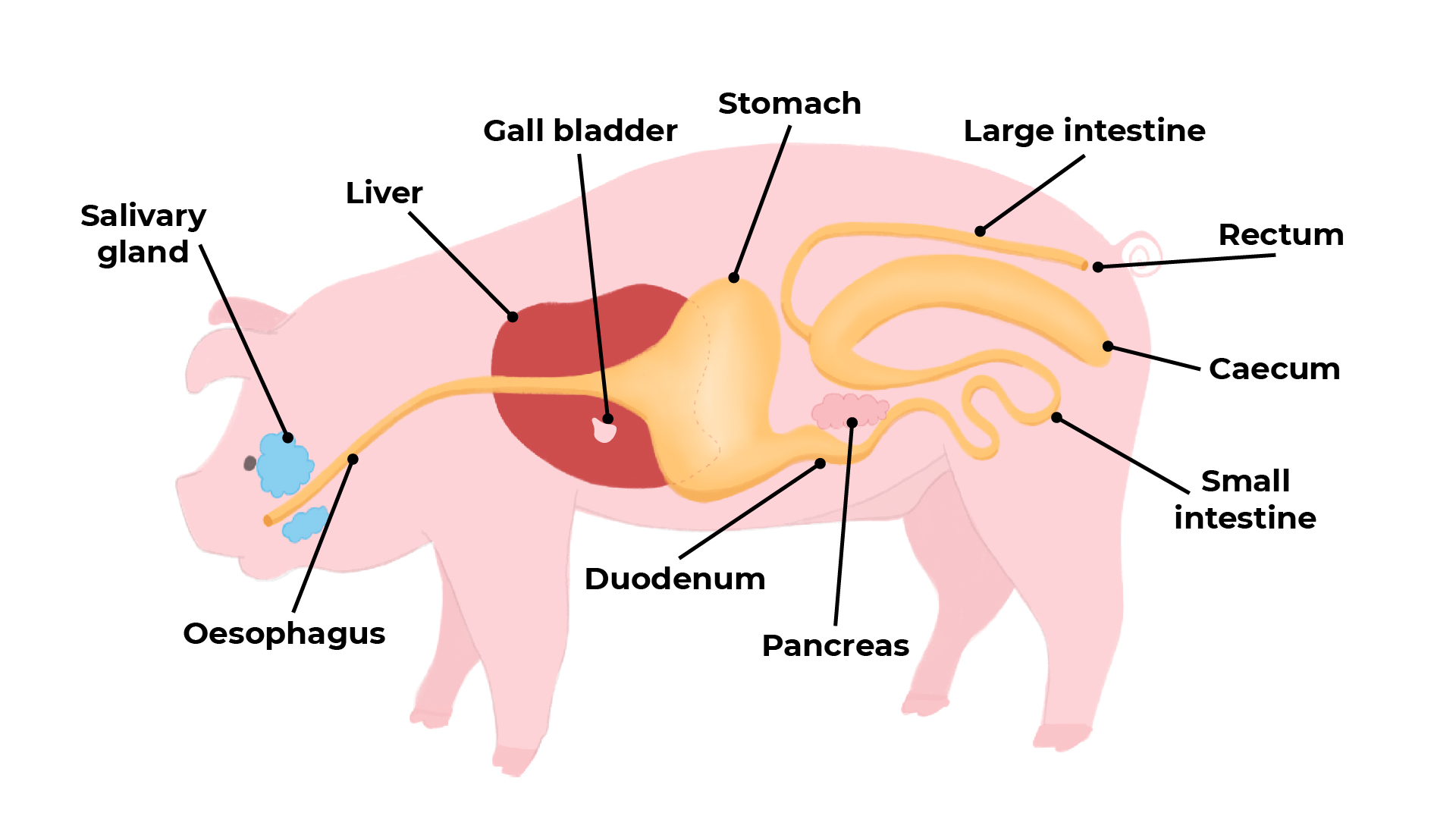Digestive tract of Monogastric:
- Monogastric animals (Rabbit, pig, horse) contain one stomach chamber.
Digestive tract of Monogastric animal is as follows
- Mouth
After intake of food, digestion process begins in the mouth. Teeth help in physical breakdown of food into smaller particles. Similarly, enzymes present if saliva aid in chemical breakdown of food.
- Esophagus
It is long tube that connects mouth to stomach. The muscle present in esophagus pushes the food towards stomach by peristalsis.
- Stomach
After esophagus pushes food into stomach, gastric juices containing enzymes act on food particles. Here food particles are reduced to liquid form.
- Small intestine
After stomach, chemical enzymatic digestion process occurs in small intestine. Here, enzymes produced by liver, small intestine, pancreas act. Almost all nutrients are absorbed here.
- Large intestine:
Now, waste materials travel to the large intestine. Water is absorbed and then bacterial fermentation takes place resulting formation of faeces. Faeces are stored here until excreted through rectum.
